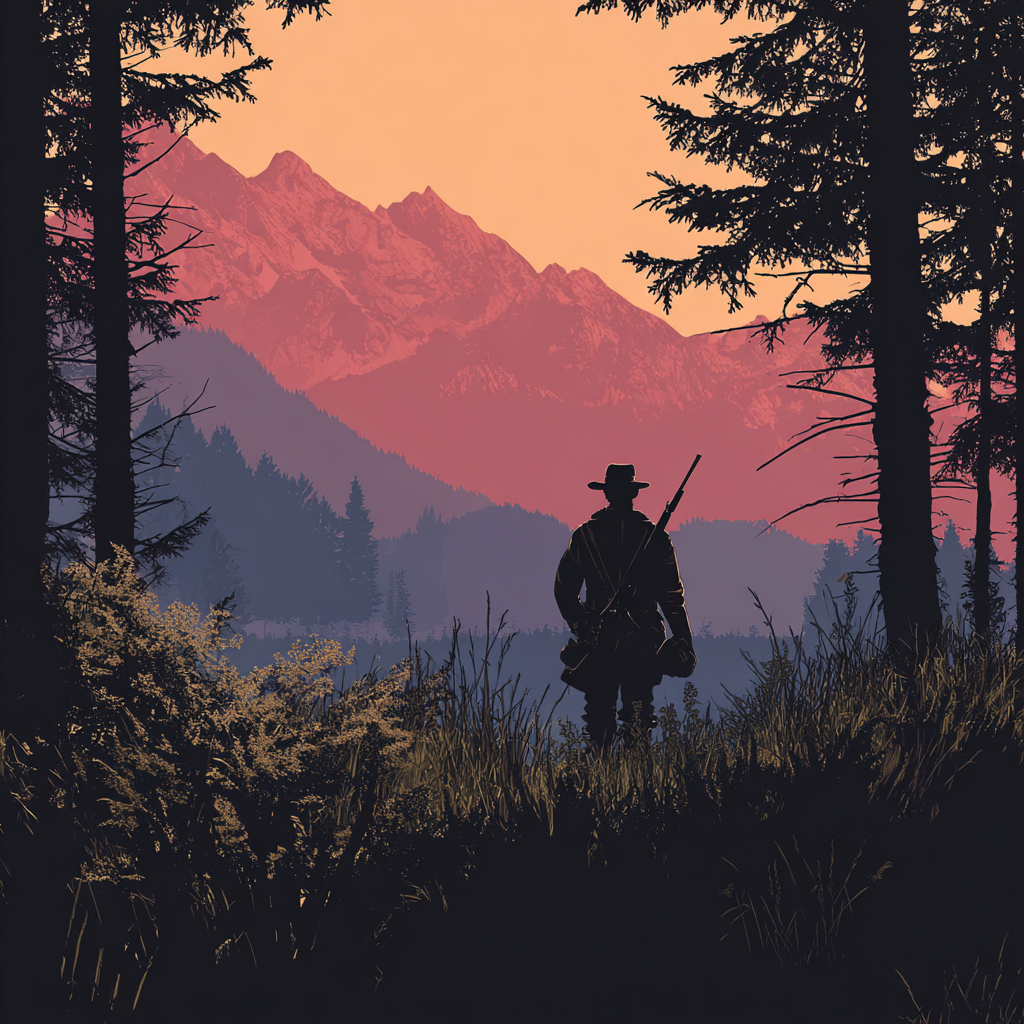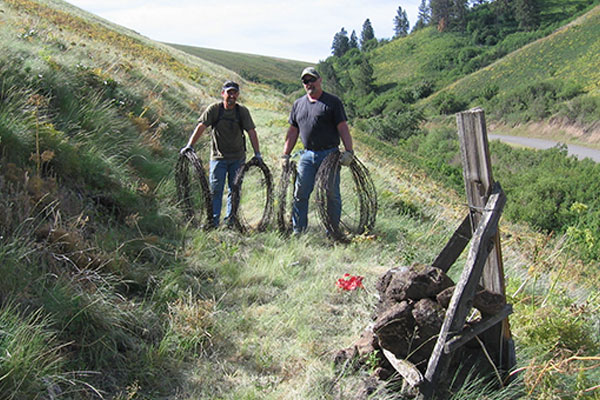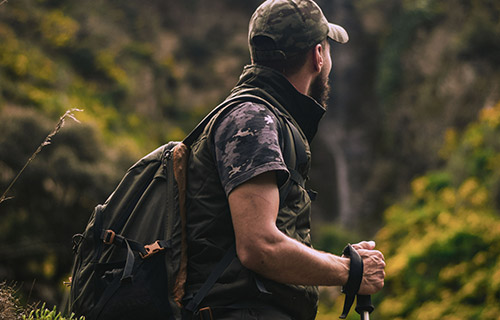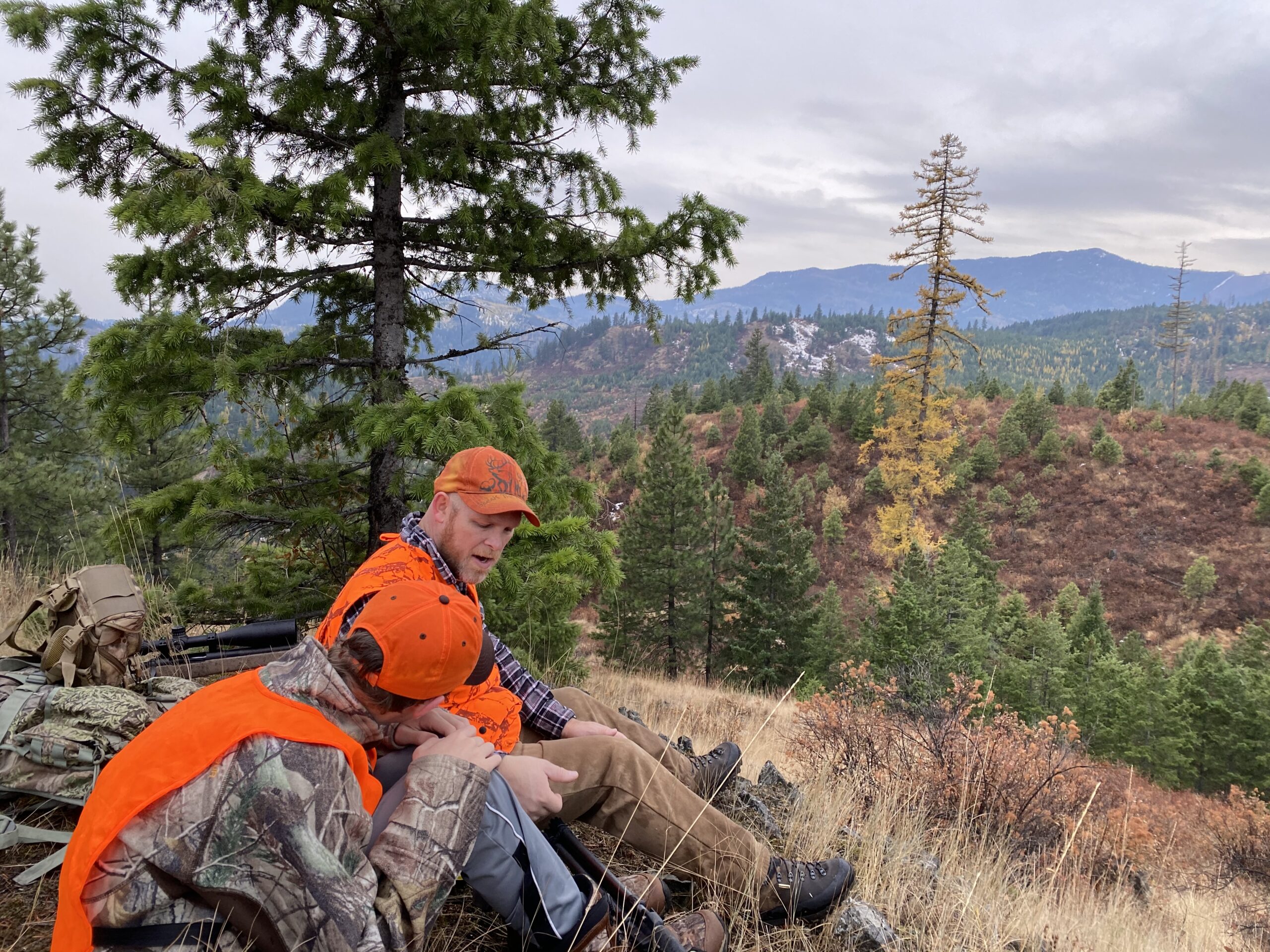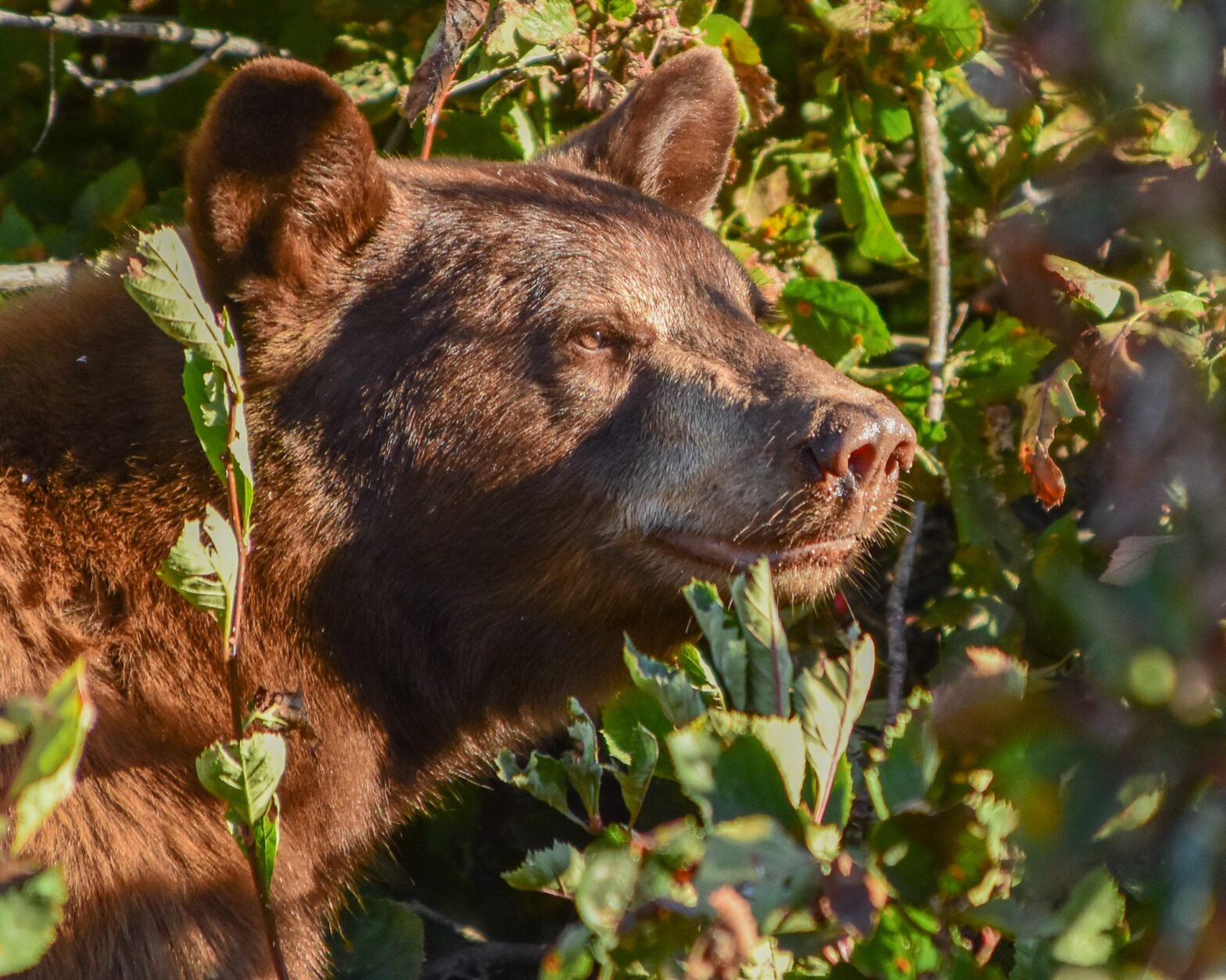When people picture hunters, the image that often comes to mind is a man kneeling beside a massive animal, gripping a rifle and grinning behind an impressive rack of antlers. For some, this symbolizes domination or senseless killing. But what if that image, and everything behind it, is deeply misunderstood? Ethical hunting is a practice rooted in respect: for wildlife, for the land, and for the responsibility that comes with taking a life. It’s an ethos that many hunters live by, and one that’s more critical today than ever before. The History Behind the Hunt The idea of hunting ethically is nothing new. One of the most well-known stories involves President Theodore Roosevelt, often called the father of American conservation. During a hunting trip in Mississippi in 1902, Roosevelt’s guide tied a bear to a tree and invited him to shoot it. Roosevelt refused, calling it unsportsmanlike. He believed deeply in the concept of fair chase, the idea that an animal deserves a fighting chance. This story became the inspiration for the first “Teddy Bear” and also serves as a powerful example of the ethical boundaries hunters impose upon themselves. Roosevelt’s legacy helped lay the foundation for our modern conservation model. He established national parks, wildlife refuges, and public lands, many of which exist today thanks to funding and advocacy by hunters and anglers. Dances With Wolves and the Cost of Disrespect In the film Dances with Wolves, there’s a scene that leaves a lasting impression: the Lakota Sioux discover a field of dead buffalo, killed only for their hides. Their bodies lie rotting in the sun, the meat and bones untouched. The heartbreak on the faces of the Lakota speaks volumes. This wasn’t fiction. In the 19th century, market hunting nearly wiped out the American bison. Tens of millions of animals were slaughtered for hides and tongues, while their carcasses were left to rot. It was a tragedy born from greed, and a stark contrast to the Indigenous relationship with the buffalo. Tribes like the Lakota used every part of the animal for food, tools, clothing, and ceremony, embodying the principle of gratitude and reciprocity. That mindset is something modern ethical hunters strive to uphold. Defining Ethical Hunting Ethical hunting is not just about following laws, it’s about values. It includes: In many ways, ethical hunting is one of the last tangible relationships people have with wild nature. It’s not about domination, it’s about participation. About being an active participant in the ecosystem rather than a passive observer. Organizations like the Rocky Mountain Elk Foundation have long promoted the idea that “Hunting Is Conservation”, a phrase that reflects how hunters contribute millions annually to wildlife habitat, research, and management through excise taxes and license fees. Without those dollars, many wildlife programs, especially for non-game species, wouldn’t exist. So What About Trophy Hunting? The term “trophy hunting” is often misunderstood and let’s be honest, posting trophy pics on social media doesn’t help… but there’s a big difference between hunting unethically for ego or status and harvesting a mature animal ethically and proudly sharing the experience. Many ethical hunters take photos with their harvest not to brag, but to honor the moment. The antlers or horns become a physical reminder of the time spent scouting, the patience required, the connection to the land, and the respect for the animal taken. It’s about the memory, not the conquest. Even in Africa, where so-called “trophy hunts” attract controversy, the full picture is more complex. In many regions, professional guides and local biologists manage populations carefully. They identify older males no longer contributing to the gene pool, those that may actually destabilize a herd if left unchecked. The meat is donated to local villages. The money supports anti-poaching efforts, pays for rangers, and protects habitat for countless species. It’s not perfect but in many cases, regulated hunting is the best tool available to conserve vast, biodiverse landscapes. The Role of INWC and the Next Generation At the Inland Northwest Wildlife Council (INWC), most of our conservation work is done by hunters. Whether restoring wildlife habitat, cleaning up public lands, or teaching kids how to fish, it’s all fueled by a deep love for nature. Our Hunter’s Education courses go far beyond the how, to teach the why. We talk about conservation funding, animal behavior, habitat management, firearm safety, and personal responsibility. We teach respect for life, for wild spaces, and for others. And we do it because we know the future of wildlife depends not just on policies or protests but on people who are willing to roll up their sleeves and do the work. We also recognize that not everyone will choose to hunt or fish. But everyone benefits from the results: clean water, thriving ecosystems, healthy wildlife populations, and preserved public lands. Why This Matters Now We live in a time when disconnection from nature is at an all-time high. Most people have never harvested their own food or seen an animal die. Supermarkets are full of plastic-wrapped meat, far removed from the reality of life and death. Ethical hunting reconnects people to that reality with reverence, humility, and care. It’s not about glorifying the kill. It’s about being honest with ourselves. About understanding that death is part of life and that we can engage in that truth responsibly, sustainably, and with gratitude. You don’t have to hunt to understand it but we invite you to see it for what it truly is: a form of conservation, culture, and care. So, the next time you see a photo of a hunter and a harvested animal, ask yourself:Is this the end of a story or just the beginning of one worth understanding? Further Reading:
Tag Archives: #conservation
Camp Wooten Fence Project *Volunteers Needed*
Fences will be flying at the Wooten Wildlife Area June 2nd – June 4th! INWC volunteers and Assistant Wildlife Manager, Kari Dingman, will meet for a weekend of camping, gourmet food, and hard work removing fencing to provide habitat connectivity for the Blue Mountain elk herds. Thank you all for taking time out of your lives to help carry on this project that is an INWC tradition. For more information contact our big game committee (509) 487-8552 info@inwc.org
Conservation Corner – Leave no Trace
Welcome to the INWC Conservation Corner, where to cover topics related to fish, wildlife, conservation, habitat and outdoor recreation. This month’s issue was submitted by board member Ken McNaughton and highlights how to enjoy the outdoors while leaving no trace. We hope you enjoy this issue!
American’s Attitudes Toward Hunting
By Marie Neumiller Each month I have the opportunity to attend WDFW commission meetings and speak on behalf of the members of the Inland Northwest Wildlife Council as a part of our ongoing education and outreach efforts. There has been a growing trend at these meetings with several commissioners noting the hunting population percentage and how it relates to the overall population of the state. For example, it was mentioned over and over that only 5% of Washingtonians hunt, so therefore, it must be true that 95% of the state opposes spring bear permit seasons, which in turn made canceling the season acceptable. In a recent conversation with WWC/HHC president Mark Pidgeon, on this topic, he pointed out that this argument is secundum quid and does not match the actual attitudes towards hunting. Mr. Pidgeon went a step further, and shared an interesting study with me that directly backed up his statement. This intensive study was conducted by the National Shooting Sports Foundation (NSSF) and Responsive Management. Together, these two organizations have been tracking American’s opinions on hunting, fishing, sport shooting, and trapping since 1995 through phone surveys. The full survey results can be found HERE, the study link is also posted at the bottom of this article [1]. Their findings paint an interesting picture of the overall approval of hunting, and if we look carefully at the results, we can see areas where we as hunters can improve our messaging and outreach efforts. Is hunting a dying sport? Some commenters at WDFW commission meetings attempt to paint hunting as an outdated way of life and give the impression that modern humans are above such primitive, cruel actions. They try to make it appear that WDFW is caving to a small minority opinion (pro-hunting) while ignoring the majority (anti-hunting). However, the NSSF study directly refutes that argument. When asked about legal hunting, 80% of Americans approve, even if they do not participate in the sport themselves. The study specifically used language emphasizing legal activities so that, “poaching or other illegal activities would not be considered in the responses.” (pg 7). This is an important distinction to make in a survey of this nature, hunters and non-hunters alike will agree that poaching is reprehensible and has no place in the North American Model of Wildlife Conservation. While hunting received an overall all approval rating of 80%, tolerance varied in several ways depending on the motivation, species taken, and methods used. Motivation for hunting There is a strong fluctuation in the approval for hunting when taking the individual hunter’s motivation into consideration. Hunting for what are considered to be more traditional or subsistence purposes saw widespread approval (see study page 12); protection of humans 85%, for the meat 84%, locally sourced food 83%, and wildlife management 82%. When hunting is done for what is perceived as more “selfish” reasons then the approval ratings absolutely tanked; sport hunting 50%, personal challenge 41%, trophy 29%. What can we learn from these numbers? Well, the results of this study answer my personal curiosities as to why anti-hunting groups work so hard to paint hunters as “blood thirsty, egotistical, trophy hunters.” The general public actually approves of hunting for the reasons that most hunters currently participate in the sport. So by changing the underlining image of hunters these opposition groups can potentially change the public perception of the activity as a whole. Most of us who hunt are in it for a variety of reasons – quality meat for our families, making memories with loved ones, reconnecting with nature and our roots, the experience, sustainable meat, and so much more. Our adventures outdoors lead us to want to protect wildlife and their habitats in accordance with the North American Model of Wildlife Conservation. It’s almost impossible to participate in this sport and not gain a love for wildlife and wild spaces. On their Facebook page Blood Origins [2] recently shared a quote from Karen Seginak that perfectly sums up a hunter’s desire to protect nature, “I didn’t become a hunter because I was a conservationist, I became a conservationist because I became a hunter.” What a perfect way to sum up the hunter/conservationist. We should each strive to do better with the messaging surrounding hunting. If all that we share publicly are the grip and grin trophy photos at the end of the hunt, then it will be easy for anti-hunting groups to erode our image and turn an 80% approval rating into a net negative. So what can you do? Share photos and stories from the entire hunting experience. Scouting, hiking, camping, shed hunting, field notes, family stories, successes, failures, sunsets, meals made from your harvests…EVERYTHING! Methods and Species Hunted Here again the approval ratings had a wild swing depending on the perceptions surrounding the species pursued and hunting methods used in that effort. Below are a few of the highlights from study pages 23 and 34 respectively. Species hunted approval ratings Deer 78% Turkey 78% Duck 74% Black bear 44% Grizzly bear 40% Wolf 39% African Lion 14% Elephant 7% Hunting method approval rating Archery 80% Hound Dogs 55% Scent attractants 43% Bait 32% High tech equipment 26% High fence 21% Spring bear 20% As hunters, we can argue all day about which pursuit methods and which animals are more ethical, but doing so only helps anti-hunting efforts. So long as the hunting is being conducted in accordance with the local laws and follows scientific models (that ensure the population improvements or sustainability) then why denigrate each other and add to any negative perceptions? We are each on a unique journey, let’s celebrate the paths that we take instead of declaring our personal methods to be best thus naming ourselves the arbiters of ethics. Just because I archery hunt for deer to make it more challenging, does not make a rifle hunter unethical or less fair chase. Conversely, just because a rifle hunter encroaches less on an animal’s personal space does not make …
WDFW Commission Spring Bear Decision
WDFW Commission – Spring Bear Permit Season 2022 What Is It? Since 1999 Washington State has offered a spring black bear hunting season. This spring season is used as a fine-tuned conservation/management tool. Instead of offering an over-the-counter hunt, WDFW carefully sets permit numbers based on several factors: *Population estimates *Previous year harvests *Timber damage concerns *Prey level concerns *Human/bear conflicts The spring permit season is a very beneficial tool in WDFW’s overall game management plan that can help the department protect the wide variety of our state’s wildlife. What Happened? October 21, 2021, WDFW biologists gave a public presentation to the WDFW Commissioners reviewing the spring bear permit numbers and making a few changes to the post-harvest process. That presentation can be viewed HERE. Public comment received that day was overwhelmingly against the season, and bear hunting in general. Most hunters stated that they didn’t provide comment because they believed that the season was going to continue and only the overall permit numbers would be considered. November 19, 2021, the department was scheduled to make their decision on the proposal. After a long and heated discussion about the ethics of the hunt , and the validity of WDFW science, the commission took their vote. Four commissioners voted to adopt the 2022 season as proposed by WDFW staff, and four commissioners voted against the proposal. The commission requires a majority vote to pass, so the proposal failed. Normally when a rule change fails the department is forced to revert to the old rule that was in place. However, the spring bear season rule (WAC 220-415-080) is somewhat unique in that the title of the rule contains a year; “2021 spring bear special permits.” Meaning that the season expired and was placed on hold. As of this writing, there will be no spring bear hunting season in 2022. What’s Next? The most important thing that we can do at this time is to respectfully share our voice with the commission. You can email the commission, give public testimony at commission meetings, and help spread the word. Share your hunting/outdoor stories from start to finish so that people can understand everything that goes into the hunt, not just the grip and grins at the end. Share the family stories, the sunset photos, scouting adventures, meals made from your harvests, every angle of the adventure. In addition, the INWC board of trustees has been working closely with our partner organizations to create a rule change petition to hopefully prevent this from happening in the future. We have been encouraged by the outpouring of support on this petition and the efforts to restore the spring bear season. But we also want to caution everyone – this will be a long process and success may not occur until after the 2022 season. Rulemaking takes time and must be done properly, or the department runs the risk of having the changes overturned by lawsuits. Following the process properly now will potentially protect the season for the long haul. Please don’t lose hope; and stay connected throughout this long journey. As I like to say…The commission cannot support our voice if we fail to share it with them.


